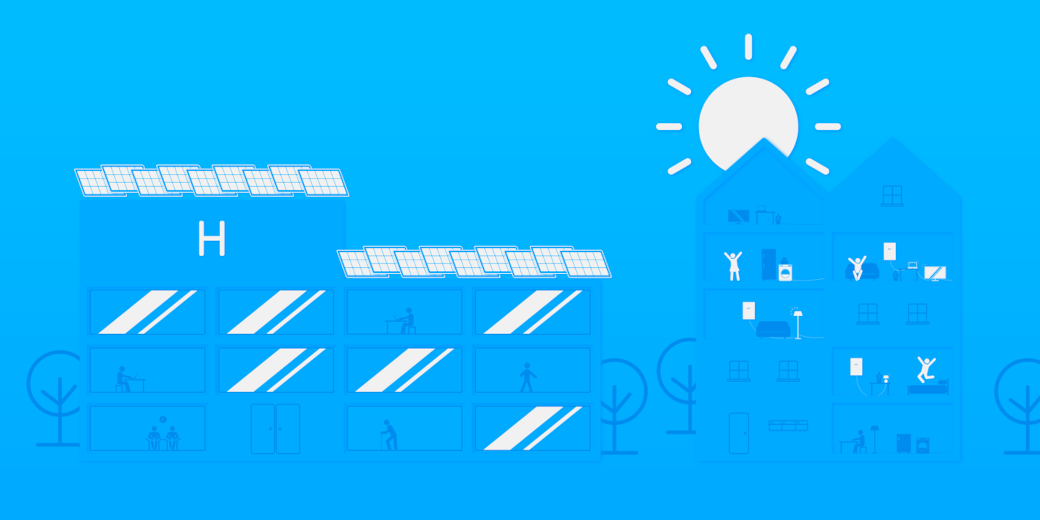LINE-FEED - Plug-in Photovoltaic Storage for the Wall Socket
Short Description
Photovoltaics and corresponding storage systems are one key element towards a sustainable energy system and zero carbon cities. State-of-the-art photovoltaic systems are difficult to install in urban areas, because those systems are designed for big roof applications on family homes or industry buildings. Due to regulatory changes, more and more shared photovoltaic systems are installed - also in urban areas.
However, an adequate solar storage solution for urban households does not exist at the moment.
This project aims for the technological development of an energy storage system (or more precisely the necessary components), which can be installed by anybody by simply plugging it in - including small apartments in a city. The storage system will be able to buffer photovoltaic energy (from any kind of photovoltaic system of any size) and does therefore represent an intelligent and integrated solution to provide energy in urban areas. If photovoltaic power is available, the storage is charged directly from the power plug and after sunset, the system supplies energy to the household by injecting it back into this very plug.
In order to realize this kind of system, three technological problems have to be overcome:
- Feedback control (target values to charge/discharge the system)
- Measurement technology (detection of the current power consumption of the household)
- Line-Battery-Interface (LiBIf) (bidirectional charging unit, which is able to charge and discharge the battery at a given power)
Technological basis of the measurement technology is the patented method, which was developed by the founder team of EET at Graz University of Technology. This measurement approach is able to detect the household's power consumption via a high frequency stimulus and without any further hardware. The Line-Battery-Interface LiBIf will be able to exchange a defined power between AC grid and battery in an efficient way (state-of-the-art charging units are uni-directional and the charging power is only a function of the state of charge).
In the project, hardware was developed and IP was protected, but also the necessary firmware and software for operation was created or further developed. The developed semianalytic models will also be useful in future projects.
Existing balcony pv systems can now be connected to an alternating current coupled storage system by means of separate power acquisition hardware. Likewise, energy communities can now transfer any momentary surpluses - such as in PV generation - via the public AC grid to controllable storage units that have the line-battery interface. The optimal allocation of the power flows is calculated by a central optimizer implemented on a remote server and outputs the best set values to the individual controllable devices of the energy community. The individual controllable storage units retain the freedom to adopt these set values or to adopt them only partially (in order to adapt to local peculiarities). This increases the self-consumption percentage in the order of 10% without adapting the hardware. The extended measurement hardware based on high-frequency admittance measurement to determine the local power demand has been developed and patented.
The new hardware components result in a variety of new usage models in the sense of the city of the future. On the one hand, energy communities are given the opportunity to increase their own consumption by integrating easy-to-install controllable storage units. But it also opens up other applications, such as the provision of decentralized energy in the form of virtual storage power plants (VPPs). The project partners will therefore pursue further development of the hardware, firmware and software in order to increase the efficiency of the developed line-battery interface using the models developed in the project (circuit losses, transformer losses). Furthermore, the hardware will be adapted to country-specific normative requirements via firmware so that it can be offered in a large number of countries.
Project Partners
Project management
Dipl.-Ing. Dr. Christoph Grimmer, EET GmbH
Project or cooperation partners
- Graz University of Technology, Electric Drives and Machines Institute
- Energie Graz GmbH & Co KG
Contact Address
EET - Efficient Energy Technology GmbH
Herrgottwiesgasse 207
A-8055 Graz
Tel.: +43 (316) 232-203
E-mail: info@eet.energy
Web: www.eet.energy

